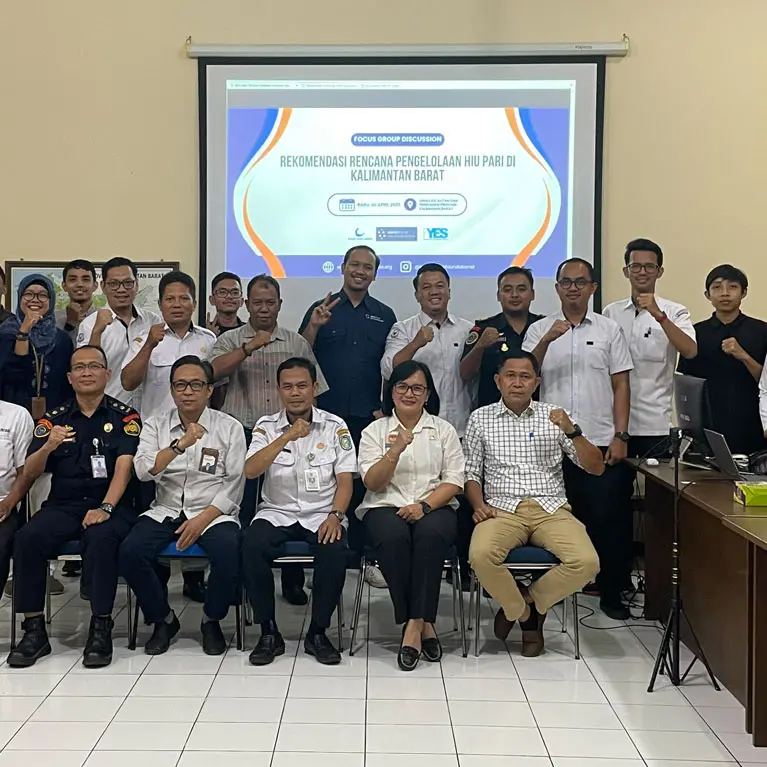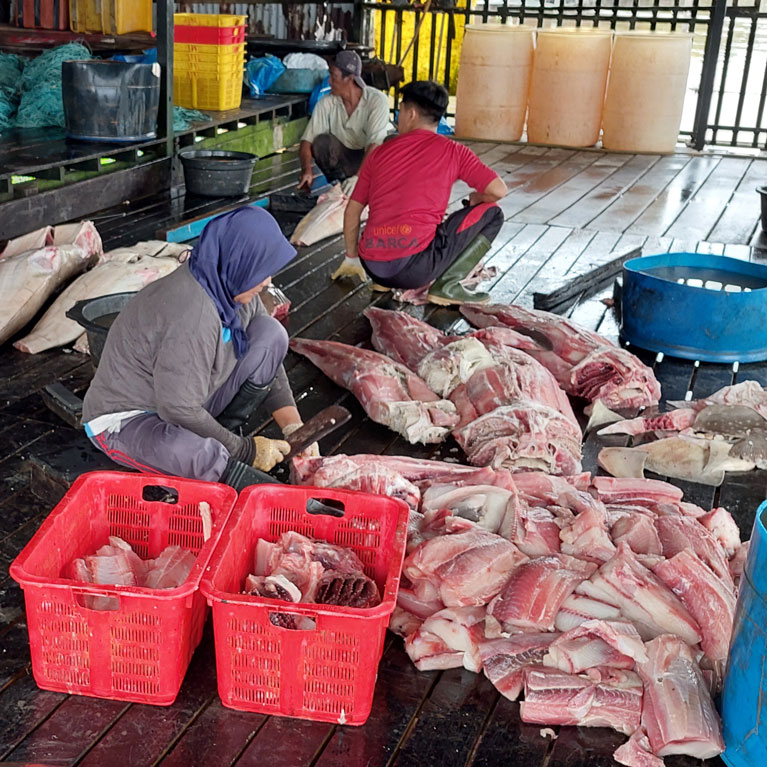The wedgefish of Sungai Kakap
Sungai Kakap is a hotspot for rays in Indonesia and, in particular, the highly threatened wedgefish species. The risk to these shark-like rays is high; Indonesia is considered to have very high catch rates and severe declines have been recorded for this group. Muhammad is on a mission to populate baseline fisheries information for wedgefish at Sungai Kakap in West Kalimantan, determining their diet, elements of their life history and their population structure. He is also working to improve awareness of these species’ conservation plight and ecological importance for fishers, traders and the public.
I was born in Jakarta, the capital of Indonesia, to West Sumatran parents, a people known as traders, thinkers and the largest matrilineal society in the world. I grew up in the city and rarely connected with the ocean. It wasn’t until I studied marine science that I realised the beauty of the ocean and the importance of marine resources, and since then there has been no looking back. My love for and interest in the ocean are the primary drivers of my study and work, while contributing to healthy shark populations and the welfare of fishers is...



Providing baseline information on critically endangered bottlenose wedgefish (Rhynchobatus australiae) in West Kalimantan, Indonesia
Our main objective is to improve the management of wedgefish populations in Indonesia by investigating basic wedgefish biology and population genetics and increasing public awareness of these critically endangered marine species.
Among all the shark and ray species, wedgefish are some of the most threatened. The fins of shark-like rays such as wedgefish are among the most valued in the international market. The global pressure on this group and the Critically Endangered status of most of its species highlight an urgent need to understand its biology. This project will provide basic biology and population information about wedgefish to promote better management of this endangered marine species in Indonesia.
Wedgefish occur primarily in tropical to temperate coastal waters and are commonly found in the Atlantic, Indian and Pacific oceans. However, it is in the South-East Asian countries that fishing for them is significantly higher than elsewhere in their global range. Wedgefish and other shark-like rays have the most valuable fins of any elasmobranch species in the international market, and the high price paid for them motivates the targeting and retention of these species. Almost all the wedgefish species are now listed as Critically Endangered by the IUCN.
Historically, conservation attention on shark-like species in general has lagged behind the attention given to more popular shark and ray species. The effective management of wedgefish is also hindered by the difficulty of identifying species. In Indonesia, for example, the name ‘white-spotted wedgefish’ was used to describe all shark-like species.
In Indonesia, where the most catches and the highest declines are recorded, species-specific management is limited to regulating international trade rather than providing protection. The lack of proper management in many countries throughout wedgefish’s range means that understanding their life history, diet, population structure and ecology has become essential. For example, this information can support the development of international trade regulations that will help national authorities to decide on trade-related management. Apart from trade, information about wedgefish species can be used for spatial-based protection, such as developing and assessing the effectiveness of marine protected areas, and imposing catch limits on fisheries.
- To provide baseline fisheries information about wedgefish at Sungai Kakap, one of the hotspots for the species, and about many other demersal rays targeted by fisheries in Indonesia.
- To understand the life history, diet and population structure of wedgefish landed at Sungai Kakap, West Kalimantan, Indonesia.
- To increase awareness among local stakeholders, fishers, traders and the general public of the status and importance of wedgefish.
Summary of main research results/outcomes:
We sampled for 12 months and collected reproductive organ measurement from 82 samples, diet content from 81 samples and 82 tissue samples for genetic population study. We also conducted three seminars, online and in-person and one shark and ray stakeholder workshop, the first ever in the province with 27 attendances from various institutions.

